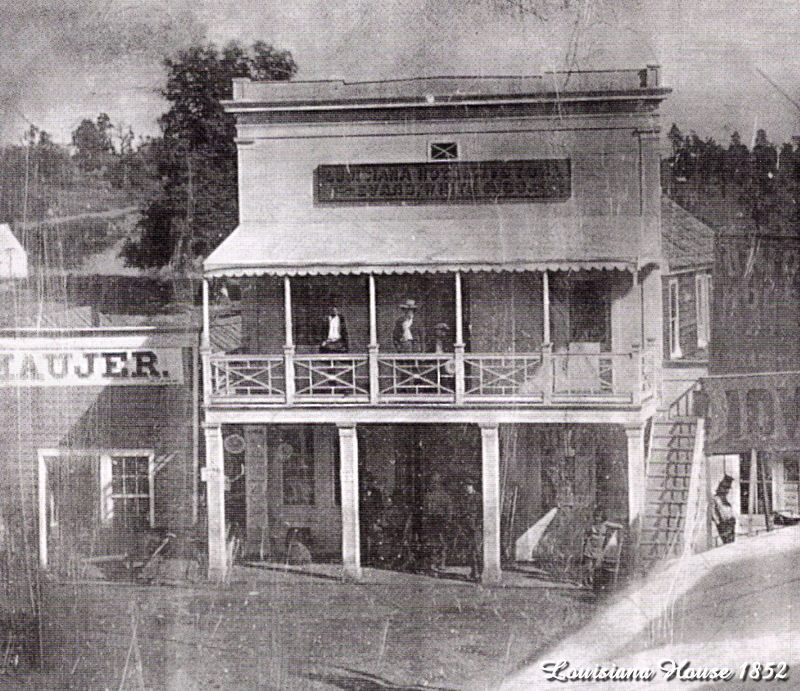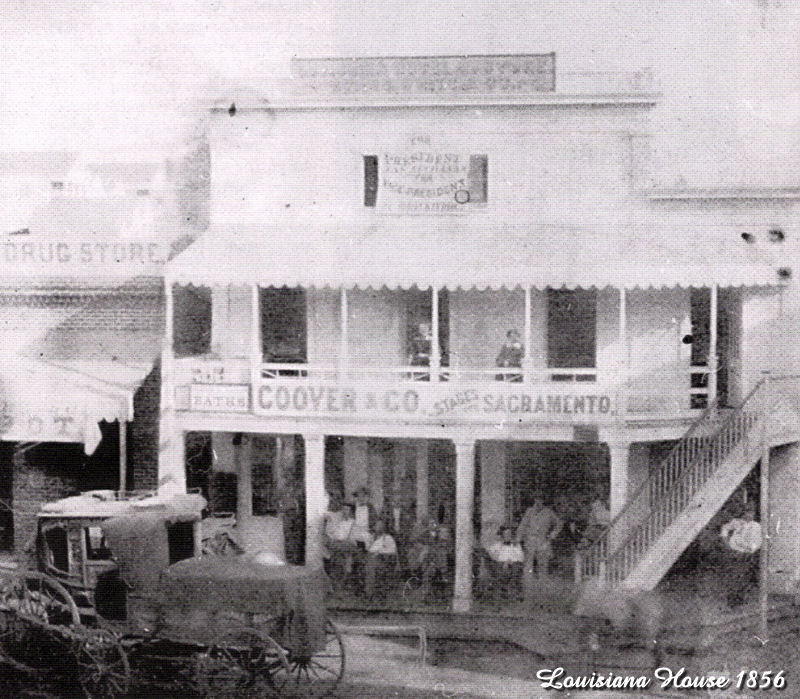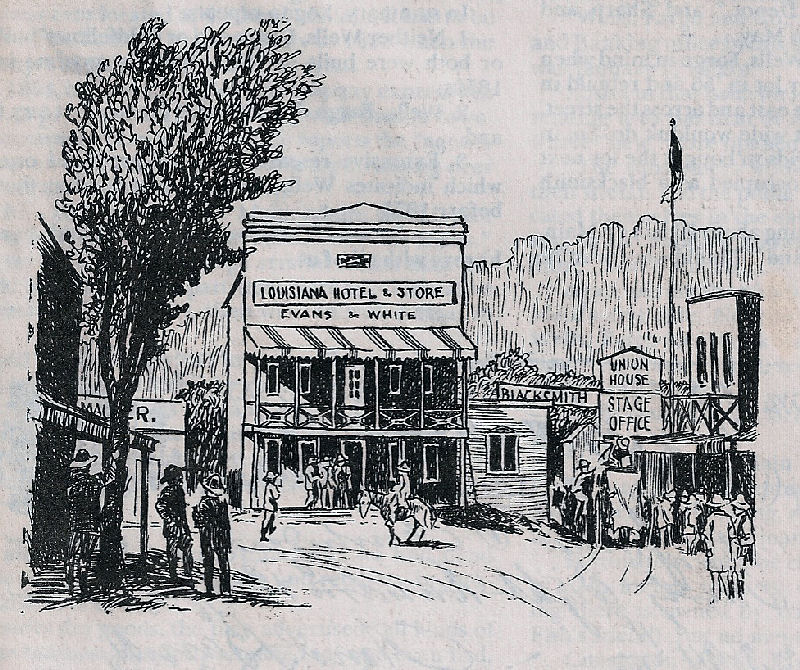





|
|
Louisiana House, Jackson, Amador County | ||
This daguerreotype. produced in the early 1850's, may be the earliest photograph taken of Jackson. Pictured here are the Louisiana Hotel and portions of the establishment of Barret and Maujer and the Union House. The Louisiana House was constructed in 1852 by D.C. White and Ellis Evans. Armstrong Askey, Evans's cousin, later bouth into the business. |
|
|
|
The Louisiana House in 1856, photo taken by D.H. Woods, who at the time was rooming at the hotel. Here you can see that the building next door that housed Barrett and Maujer's store has been replaced by a brick structure, and a more substantial staircase has been added to the hotel for access to the second floor. The sign over the entrance announces the establishment as a stop for Charles Coover's stage liines operating out of Sacramento. |
|
|
This building was destroyed on August 23, 1862, when the devastating fire swept through the town, burning all but the brick buildings to the ground. The partners rebuilt a larger hotel after the fire, which would become the National Hotel. This rare drawing by by Larry Schuman which was sketched from the original, appeared in an early newspaper in July, 1854. |
|
|
|
This side of the creek, opposite the spring, and high enough on the bank to escape the normal freshet, the first merchants pitched their tents or tacked together canvas-covered, wooden buildings. Probably in 1849 (Jesse Mason in our Thompson and West county history says 1850) a man named Ellis Evans claimed ground or a lot by the trail, just northerly of the creek, about where the National stands today. Evans was a Pennsylvanian. He left there as a young man to seek his fortune, went to Louisiana and where cotton was king got into the cotton gin manufacturing business. His cousin, Armstrong Askey, a Keystone state native, too, joined him in the venture. Perhaps another Pennsylvanian, D.C. White, did, too. Most likely when gold was discovered, Evans and White came to California in 1849. Askey, perhaps, went back home before crossing the plains in '50 and joining Evans and White in Jackson's Creek. Before Askey's arrival, Evans and White became partners in a grocery and general provision store. That store, probably pieced together in 1849 but certainly up by 1850, was the first on the National hotel's site. If it had a sign at all it probably read "Evans & White's Store." Later, when Askey arrived, it was "Evans, White & Co.." Our first documented mention of the site and store was recorded in the fall of 1851, when the county seat of Calaveras county was at Jackson's Creek. On August 5 George W. Harris sold to Charles Peters" 1 canvas house and chattels" bounded "northeast by Barrett & Brothers" and "southeast by Evans & White." That first store may have been canvas, too, or the loose-chinked log structure Mason talks about. Regardless, sometime in 1852 that first rude storehouse was burned or pulled down and a tall, thin, wooden building was built in its place. Its two-story front faced Main, and three-story back faced the creek. A rectangular sign, hiding the steep pitch of its roof, announced: "The Louisiana Hotel and Store" and a line beneath said, "Evans, White & Co. |
||
Return to our Jackson Tour or click on our Miner to end your tour 
| ||
Information, photographs courtesy of the Amador County Archives, The Historical Marker Database, The Chronicling America Database, and Larry Cenotto, Amador County's Historian CONTACT US |
||
|
|
||


